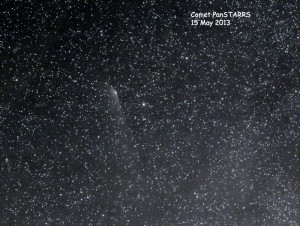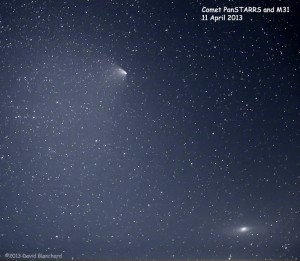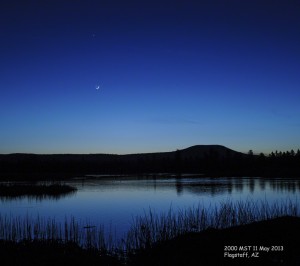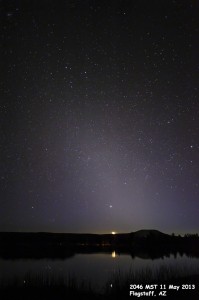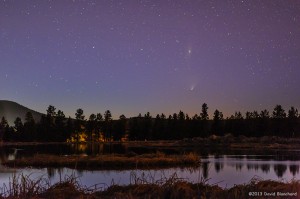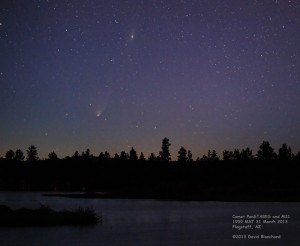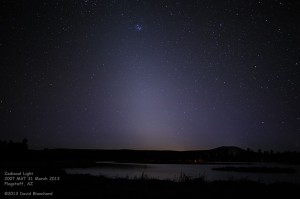Comet PanSTARRS continues to amaze sky watchers! Even though it has significantly diminished in brightness as it moves away it is still easily photographed. Even more amazing is the incredible “anti-tail” that has developed. Astronomy Photo of the Day (APOD) has a nice image of the anti-tail of Comet PanSTARRS. APOD notes that “…PanSTARRS anti-tail is one of the longest since the appearance of Comet Arend-Roland in 1957.”
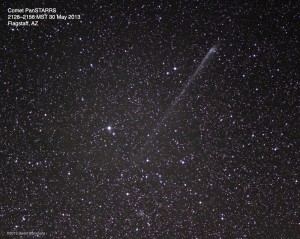
This image was taken using a fixed tripod along with a moderate and fast telephoto lens (Nikon AF-S 85mm f/1.8G). Thirty separate images of 15s duration were stacked using the free Deep Sky Stacker software. This relatively-long exposure with a telephoto lens was only possible because the comet is located so close to Polaris (North Star) resulting in minimal star motion. This shows that high-end astronomy equipment (i.e. equatorial tracking mount, telescope, modified cameras, etc.) is not necessary to take photographs of the comet.
